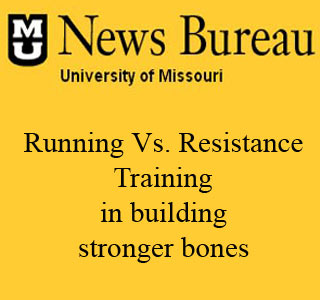
Adding another view to this list, a new study states that running may prove to be more beneficial than resistance training in preventing bone loss that may possibly cause osteoporosis. This study was conducted by the University of Missouri.
Osteoporosis is a grave matter of public concern. The National Osteoporosis Foundation estimates that more than 200 million people globally are affected with osteoporosis. With the aim of determining which type of exercise aids in preventing the development of osteoporosis, the study investigators assessed few men aging from 19 to 45 years of age. They evaluated the long term effects of cycling, running, and resistance training on the entire body and regional body mineral density in these men.
Pam Hinton, associate professor in the Department of Nutrition and Exercise Physiology, University of Missouri College of Human Environmental Sciences, says that, “The results of the study confirm that both resistance training and high-impact endurance activities increase bone mineral density. However, high-impact sports, like running, appear to have a greater beneficial effect.â€
Hinton further says that, “Exercise programs to increase bone strength should be designed using what is known about how bones respond to exercise. Only the skeletal sites that experience increased stress from exercise will become stronger. For example, performing upper body resistance exercises will not increase bone mineral density of the hips. The response of bone to loading is determined by the magnitude of the force, and the rate and direction(s) at which it is applied. Therefore, high-impact, dynamic, multi-directional activities, including structured jump-training (plyometrics), result in greater gains in bone strength. Playing basketball, volleyball, or soccer are also good options.â€
The investigators found that runners had greater body mineral density on their spine as compared to those of the cyclists. They thus conclude that high impact exercises could prove to be beneficial and more effective in maintaining strong bones as compared to resistance training.
Their findings are published in the issue of the Journal of Strength Conditioning.
